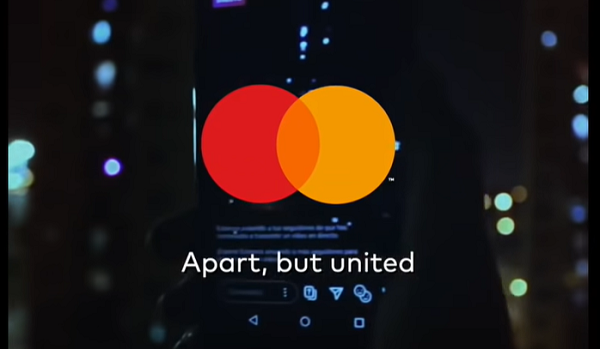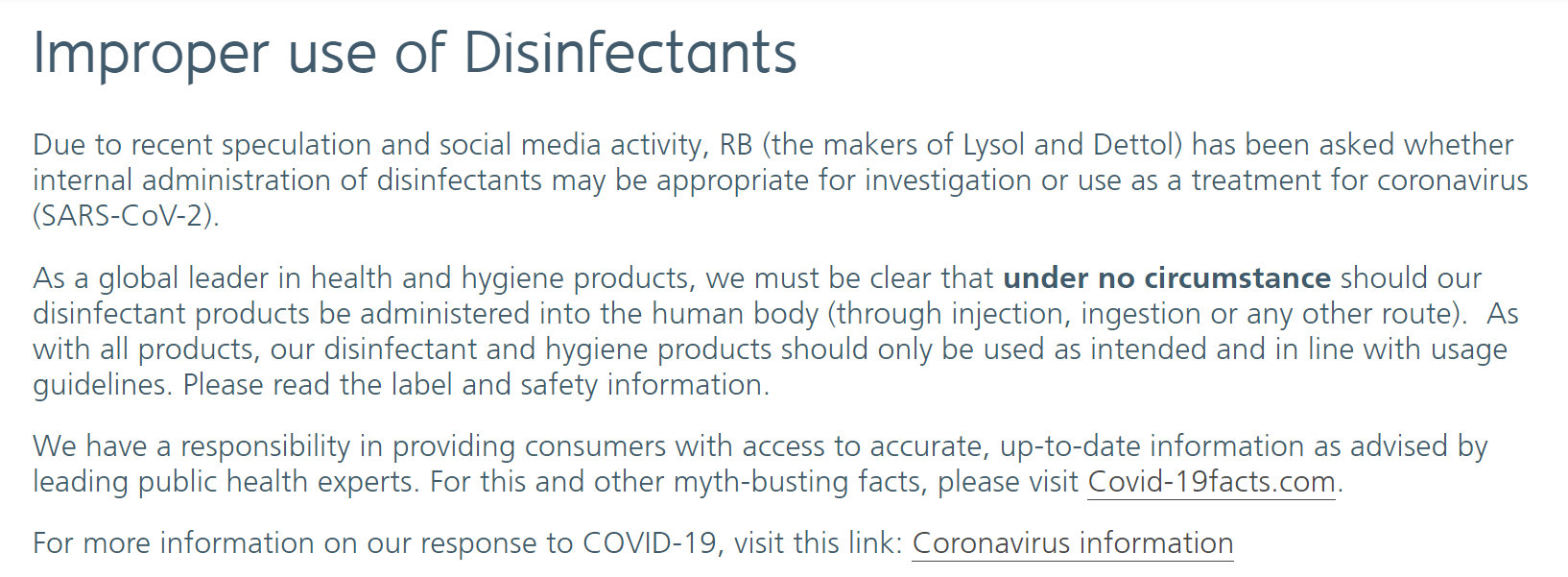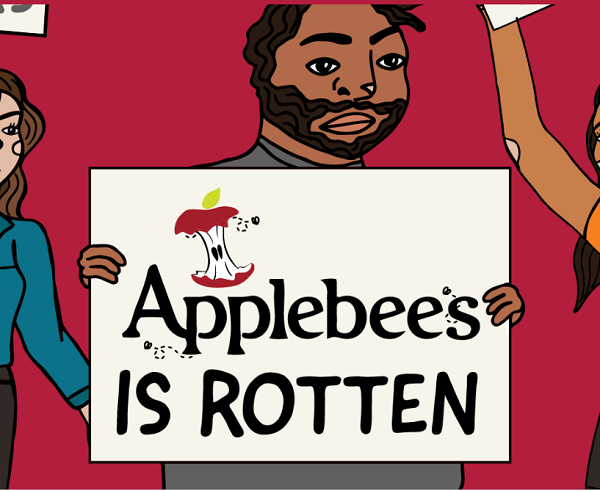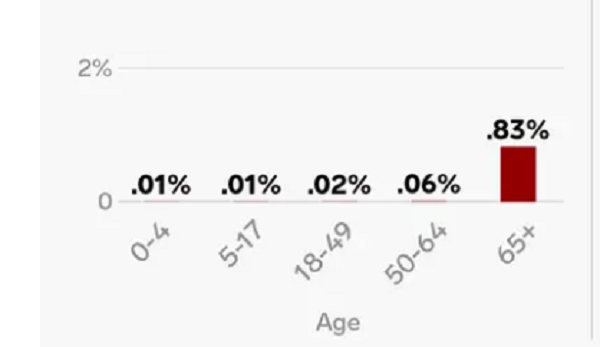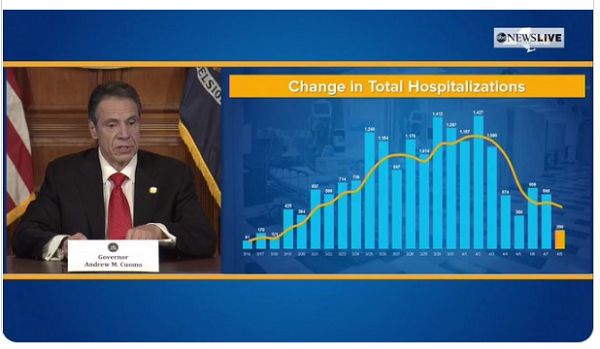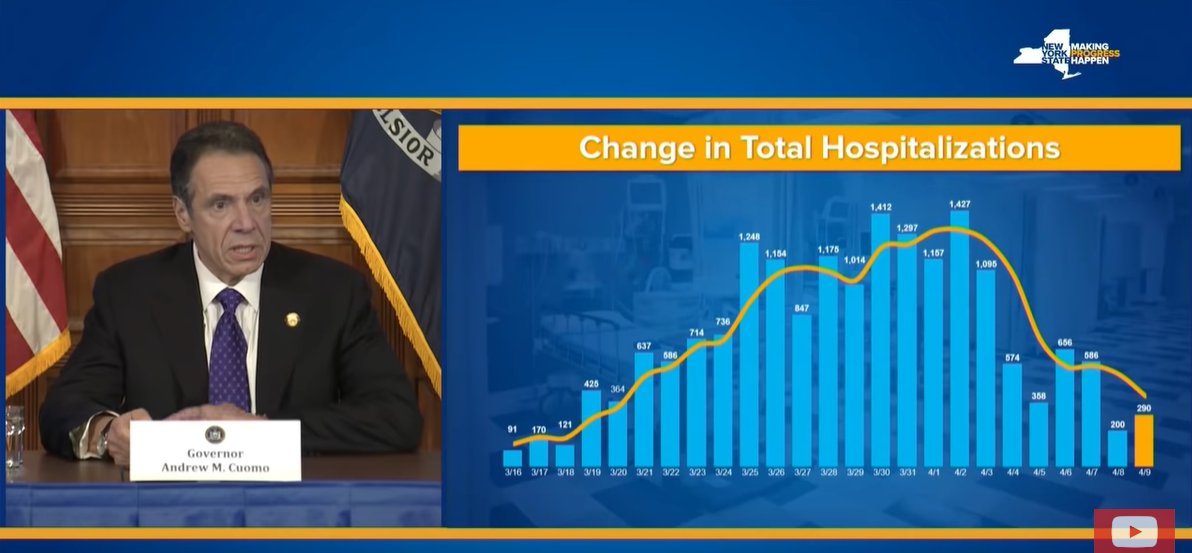Amazon's Email Template
A Reddit poster claims that “Amazon accidentally sent out their email template and it’s hilarious,” but others say it’s fairly standard.
Using a music analogy, the template author encourages varied sentence structures and a strong call to action or CTA.
Discussion:
Do you believe this is an Amazon original that mistakenly went public? Why or why not?
What principles do you take away from this example?
What would you add? (Hint: Something about skim-value?)
Business Writing Advice
Dr. Sharon Cannon at UNC-Chapel Hill Kenan-Flagler (@smccannon) tweets great articles for business communication faculty and students. This week, she found one by Devon Delfino, “How to Improve Your Business Writing Style.”
Delfino offers nine principles:
Identify your primary goal in business communications
Focus on your readers’ needs and professional goals
Cut to the chase in business writing: Focus on clarity over quantity
Streamline structure and organization
Fine-tune your tone and business writing style
Use an active, human voice
Include clear calls to action
Aim for brand consistency in your business writing style
Do a final check
Discussion:
Read the entire article, which offers more good advice. Which principles most align with what you’re learning in your business communication class? Does the article offer something you haven’t learned?
I would add one point, particularly, which is to adjust your tone to that of your organization. Every department and company has its own style. What differences have you observed from your experience?
What advice would you add?
Motion Charts
A New York Times article, “What Does Opportunity Look Like Where You Live?,” includes motion charts depicting life expectancy, commute times, and other variables across the U.S.
Although imperfect, the charts show changes over time. The movement is an effective way to dramatize differences between groups, as Gapminder has done with UN data for years.
Discussion:
The bubbles move when they are first loaded on the page, but I can’t seem to “interact” with them the way I expect to with an “interactive graphic.” What did you expect? Could these be improved?
Some charts have a truncated axis; for example, one about life expectancy starts at 60. What are the implications, and should this be avoided?
What, if anything, surprises you about the data presented?
COVID-19 Crisis Communication for Reopening the U.S.
What comes after we “flatten the curve” of COVID cases? New York Times opinion writer Charlie Warzel warns that, without a clear communication strategy for what’s next, people will distrust leaders.
Warzel cites six communication guidelines from the report of a working group at The University of Minnesota, The Center for Infectious Disease Research and Policy (CIDRP).:
Don’t Over Reassure.
Proclaim Uncertainty
Validate Emotions—Your Audience’s and Your Own
Give People Things to Do
Admit and Apologize for Errors
Share Dilemma
Discussion:
How should U.S. officials communicate now? What do they need to accomplish, and how well are our current leaders meeting the challenge? In other words, do you agree with Warzel that our leaders are falling short?
Read the entire report. What other principles does the group recommend?
Analyze the report: the audiences, objectives, writing style, organization, and so on. What are the strengths, and how could it be improved?
Airlines CEOs Criticize Boeing CEO's Prediction
During an interview on the “Today” show, Savannah Guthrie asked Boeing CEO David Calhoun whether a major U.S. airline might not survive because of the pandemic. Calhoun said, “Well, I don’t want to get too predictive on that subject, but yes, most likely. Something will happen when September comes around.” He also said that “we believe we will return to a growth rate similar to the past, but it might take us three, five years to get there.”
The response angered major airline executives, who are currently negotiating for federal assistance.
Another Boeing executive defended Calhoun’s statement:
“Some weren’t keen on his sobering assessment of industry challenges ahead, but others appreciated him telling it like it is. It’s in his nature to be frank.”
Discussion:
What’s your view of Calhoun’s comment? One view is that, during a global pandemic, executives might need to be particularly sensitive. Another view is that this is a time for honest, direct talk.
What are the potential implications of his comment? Should he have avoided it?
What the entire interview. How did Calhoun do overall? What are his communication objectives and key messages?
A Leader Example in My Book Is Charged With Conspiracy
I was sad to see that Paul Kruse, former CEO of Blue Bell Creamery, has been charged with covering up the listeria breakout in 2015. In my book, Building Leadership Character, Kruse is a positive example of a leader who demonstrates vulnerability. His 2016 video announcing employee layoffs after the breakout was emotional and authentic.
Prosecutors say that Kruse delayed recalling tainted products, instructed employees to tell customers that product delays were caused by mechanical problems, and failed to take other appropriate action.
Blue Bell agreed to pay $19.5 million to the Department of Justice and posted a statement on its website, which focuses more on the future than on the past.
Discussion:
Can you reconcile both perspectives of Kruse as a leader? Could he be someone who covers up listeria and someone who gets emotional when talking about employee layoffs?
Assess the company’s statement. Who are the audiences, and what are the communication objectives?
Airbnb Layoff Message
Airbnb Co-Founder and CEO Brian Chesky wrote to employees to announce layoffs. Ask we see more and more, the company posted the message publicly on its blog, knowing it would likely go viral anyway.
In his message, Chesky announces the decision to lay off about 25% of the workforce as part of their more targeted business strategy. Airbnb is reducing investments in some services to focus on its core business.
Although he sends a mass email, Chesky tailors the last part to different groups:
To those of you staying,
One of the most important ways we can honor those who are leaving is for them to know that their contributions mattered, and that they will always be part of Airbnb’s story. I am confident their work will live on, just like this mission will live on.
To those leaving Airbnb,
I am truly sorry. Please know this is not your fault. The world will never stop seeking the qualities and talents that you brought to Airbnb…that helped make Airbnb. I want to thank you, from the bottom of my heart, for sharing them with us.
Brian
Discussion:
What’s your view of the message? Consider the audiences and objective.
It’s quite long. Is it too long or just right?
I wish that people who were staying in their current role could get a message too. It’s unclear whether that’s planned—only that they “will not receive a calendar invite.” Your thoughts?
Google’s XYZ Resume Formula
A Ladders article offers good advice from Google for writing resumes. Some information is basic, such as tailoring resumes for each job and skipping the objective. The company also suggests the XYZ format for bullets to focus on accomplishments: “Accomplished [X] as measured by [Y], by doing [Z].”
The author provides this example:
OK: “Won second place in hackathon.”
Better: “Won second place out of 50 teams in hackathon.”
Best: “Won second place out of 50 teams in hackathon at NJ Tech by working with two colleagues to develop an app that synchronizes mobile calendars.
Discussion:
Does your resume follow this format? How can you improve the descriptions?
Check your resume bullets for the start of each. The first words next to the bullet will be read most often. Do they emphasize your main point? How can you reorder text within bullets?
Companies That Returned Federal Funding
Controversy swirls as companies grapple with whether to keep or return federal funding for the COVID-19 crisis. Distributions from the Paycheck Protection Program (PPP) seem unfair as some small businesses—the intended recipients—can’t get forgivable loans, while some larger businesses received millions of dollars that, at least in some cases, isn’t needed as emergency funding.
As the first and most highly publicized company, Shake Shack returned $10 million. Forbes tallies several others, including Ruth’s Hospitality Group, Sweetgreen, and the Los Angeles Lakers.
Store image source. Food image source.
Discussion:
What’s your view of companies that returned money compared to those that didn’t?
How should a company decide whether to return the funding?
Shake Shack doesn’t include a press release on its website or a tweet about the decision. What’s your view of this approach? Should the company promote the decision more boldly? Why or why not?
United Airlines Message
The COVID-19 messages keep coming from airlines and other companies. Here’s one from United Airlines, encouraging us to fly by offering flexibility and promising cleanliness.
Dear Amy,
As we all adjust to this new normal, my thoughts are with you and your families and I hope you're staying safe and healthy. The last several weeks have been emotional and trying for all of us, but I continue to be inspired by the goodness in people and the genuine acts of kindness, large and small, that I see every day. These gestures of warmth, strength and caring give me the confidence that in time, we will emerge more United Together than ever before.
It's in that spirit that I wanted to share with you some good news about what the 100,000 family members of United Airlines have been doing for you as we tackle the biggest and most disruptive crisis we've faced in our 94‑year history.
Good news as you're making travel plans
Life is unpredictable in lots of ways right now. We know many of you started the year planning to fly with us to visit family, go to a game or concert, attend a trade show or just get away. And you might be feeling anxious about what to do about your upcoming travel plans. That's why we've waived the fees to change or cancel any trip with us through the end of 2020, including travel that was already planned as well as trips that you're hoping to take in the future. Every customer now has until May 31 to make changes to current reservations or book new flights that can be changed or canceled without a fee, and you'll be able to reschedule your trip for anytime in the next 12 months. So take the next few weeks and do what's best for you, your family and your work.
Good news for when you choose to fly
Safety has always been our top priority, and because of that, the social distancing and cleaning procedures that have become a way of life for all of us are now staples of the way we run our airline. When you're ready to fly, you'll see that a lot has changed at the airport and on board our aircraft. We're boarding fewer customers at a time and starting from the back of the plane to avoid crowding in the gate area, on the jet bridge and in the aisle. We're automatically blocking middle seats to give you enough space on board, requiring all our employees on board, including our flight attendants, to wear masks and, in early May, making masks available to our customers. Of course, these measures are in addition to our state‑of‑the‑art sanitization procedures like cleaning our aircraft with electrostatic sprayers, and extra precautions like taking our employees' temperatures before they start work to protect the well‑being of our customers and colleagues. Find a complete overview of what's changed at United to adapt to this new normal.
Good news for our communities
While we wait to welcome you back, we've been using our time and resources to do our part and support those on the frontlines of this crisis as well as the millions of families who have been affected by the most dramatic disruption of the labor market since the Great Depression. Leveraging the full power of our airline to do the right thing, we've flown more than 1,000 medical volunteers for free; donated 170,000 pounds of food; and used our fleet to get close to 20,000 stranded people home and medical supplies to the places that need them most. Here are just a few examples of how we're contributing in the fight against COVID‑19:
I'll end where I started: I hope you and your family continue to be well. This crisis has revealed a great deal about who we are as people and I'm moved by your continued resilience and resolve. We look forward to welcoming you the next time you take to the friendly skies.
Stay safe and be well,
Toby Enqvist
Chief Customer Officer
United Airlines
Discussion:
What principles of business communication does the United message follow? What could be improved?
How does this message compare to others you received recently?
After reading the Morning Consult report about messaging during COVID-19, what recommendations would you make to United?
Similar COVID-19 Ads
Are all COVID-19 ads the same? A digital marketer compiled excerpts from recent ads showing similar images, music, and phrases. He titled his video, “Every Covid-19 Commercial Is Exactly the Same.”
Sean Haney describes why so many ads are the same:
What's the deal? In reality, many companies have found themselves short on cash, almost overnight. They needed to get a message out - and quick. They asked their teams to throw something together. Since they can't film a new ad because of social distancing, they compiled old stock b-roll footage and found the most inoffensive royalty-free piano track they could find. This, combined with a decade of marketing trends dictated by focus groups and design-by-committee, released a tsunami of derivative, cliche ads all within a week of one another. It's not a conspiracy - but perhaps a sign that it's time for something new.
A Morning Consult report offers guidance for companies. From 2,200 Americans at the end of March, we learn how companies should communicate. For example, people say they are more likely to purchase from a company that provides “a public statement about support being given to laid-off employees” compared to other types of statements.
Discussion:
What’s your view of these company ads? How do you react when you see them? Do you react differently to different companies’ ads?
Read the report. Analyze the audience, objectives, tone, organization, visuals, and so on. What principles of business communication are followed?
What else do you learn from the report about how companies should communicate during COVID-19?
Lysol Disputes Claims of Cure
During his press conference, President Trump questioned whether disinfectants could be used internally to fight the new coronavirus:
“I see the disinfectant that knocks it out in a minute, one minute. And is there a way we can do something like that by injection inside, or almost a cleaning? Because you see it gets inside the lungs and it does a tremendous number on the lungs, so it would be interesting to check that.”
The president later said, “I was asking a question sarcastically to reporters like you just to see what would happen.” But Lysol executives are concerned that people may take the idea seriously and try to treat themselves. Reckitt Benckiser, which makes Lysol products, issued a statement, “Improper Use of Disinfectants.”
Discussion:
Watch the president’s comment during the press conference. What’s your view of his speculation?
Analyze the Lysol maker’s response. What works well, and what could be improved? What is appropriate or inappropriate for a brand’s parent to dispute the president’s claim in this way?
Employees Seek Better Benefits from Applebee's and IHOP
Employees of Applebee’s and IHOP are asking for better benefits from the restaurants’ parent company, Dine Brands.
The group’s website, Applebeesisrotten, paints a dire picture of the impact of the pandemic on restaurant workers and asks people to sign their petition for “comprehensive paid sick leave, paid family and medical leave, and income relief to all works.”
A tweet posted on April 22 indicates that company executives haven’t responded to the group’s demands.
Discussion:
Analyze the group’s use of persuasive strategies on the website. How well do they balance logic, emotion, and credibility? What suggestions for improvement would you offer?
The petition shows less than 7,000 signatures as of today. What, if any, effect might this have on the executives’ response.
Should the executives respond? If so, how?
Avoid Trite Customer Service Expressions
Consultants in online communication advise writers to avoid standard customer services phrases that could be off-putting during the COVID-19 pandemic:
“We regret any inconvenience this may have caused.”
“Well share your feedback with the appropriate department.”
“[Insert topic] is extremely important to us.”
“Our records show…”
“As per your request…”
“Is there anything else I can help you with today?”
Discussion:
I would argue that these expressions should be avoided any time. What are your thoughts?
Do you find any of these particularly annoying?
What could you say instead of each of the above?
Judge Requests Professional Attire
I’ll admit it: I’ve been wearing leggings or jeans for the past five weeks. I’m guessing that’s common, but some people are taking attire for online meetings to an extreme. Stories of people showing up shirtless or in bed for Zoom meetings are causing leaders to provide more guidance for what to wear on video.
A judge in Broward County, Florida, ordered lawyers to dress for video meetings as they would in court. Judge Dennis Bailey laments the current attire and attitude:
“It is remarkable how many ATTORNEYS appear inappropriately on camera. We've seen many lawyers in casual shirts and blouses, with no concern for ill-grooming, in bedrooms with the master bed in the background, etc. One male lawyer appeared shirtless and one female attorney appeared still in bed, still under the covers. And putting on a beach cover-up won't cover up you're poolside in a bathing suit. So, please, if you don't mind, let's treat court hearings as court hearings, whether Zooming or not.”
The judge also offers advice for Zoom hearings, which he says take longer and require more planning to present exhibits.
In response, the chief judge for the district sent his own letter, softening the tone and direction:
“As Chief Judge I was unaware of this letter going out until I started to receive inquiries. As far as decorum in zoom hearings we have not seen the need to establish hard and fast rules. We certainly appreciate everyone being polite, professional and not disruptive during the hearings. Please remember most all of these hearings are open to the public and thus everyone, including judges and general magistrates, should dress and behave accordingly.“
Judge Bailey image source. Zoom in bed image source.
Discussion:
Read the full original letter and the chief judge’s response. How do the messages compare in terms of audience analysis, tone, content, and organization?
What’s your view of Judge Bailey’s letter: appropriate, off-base, or something else?
What do you observe on Zoom meetings? Are people presenting themselves less professionally? What’s your perspective on this topic?
What Not to Say
An article posted on Medium, “11 Things Socially Aware People Don’t Say,” offers good advice during this crisis—and for other times. Michael Thompson suggests avoiding the following: “I told you so,” “I know how you feel,” “Good luck with that,” “It’s not my fault,” “It’s all in your head,” “That was stupid,” “You always/You never,” “Everything happens for a reason,” “As I said before,” and “With all due respect.”
I would add one: “Frankly” or “Honestly.” When people introduce a statement this way, I find myself disbelieving them and questioning what they say typically. Without the preface, I’ll assume you’re speaking frankly and honestly.
Discussion:
Many of these phrases have a positive or harmless intent, but how could the impact be harmful?
What could you say instead of these expressions?
What would you add to this list?
Improving Column Charts
So many charts about COVID-19 could be improved. Here’s one from a Business Insider article, which compares death rates for the flu and COVID-19.
Discussion:
What issues do you see in the graphic? (Hint: Check the x axis, and describe what the percentage on the y axis represents.) How would you fix the problems?
What are the consequences of designing charts in this way?
Find another recent chart to analyze. In what ways does the graphic convey information accurately, and how does it fall short?
Governor Cuomo's Leadership
A Wall Street Journal article analyzes NY Governor Cuomo’s leadership during the coronavirus pandemic. Crisis communication experts conclude that, although he’s not a naturally gifted orator, he is doing what the public needs now.
People appreciate the governor’s focus on facts and his direct style as well as his discussions of emotion and his brother’s illness, which “humanize” him.
The article sites Cuomo’s current popularity: “Gov. Andrew Cuomo’s job-performance rating soared in March to its highest level ever, according to a poll conducted by the Siena College Research Institute.”
Performer Randy Rainbow produced a funny video, “ANDY!” to the tune of “Sandy” from the musical Grease about his appreciation.
Discussion:
Read the article for other conclusions about the governor’s leadership style. With which ideas do you agree and disagree?
What other examples have you seen of people stepping up when the situation required them to be leaders? How did they do?
Message from Zoom CEO
People who never heard of Zoom are now relying on the company to provide flawless service, but of course we experience problems. In a blog post, CEO Eric Yuan describes how Zoom use has “ballooned overnight” and what the company has done to meet demand and improve the service.
Yuan also expresses gratitude to Zoom users at the end of the post, demonstrating business communication principles and leadership character:
Transparency has always been a core part of our culture. I am committed to being open and honest with you about areas where we are strengthening our platform and areas where users can take steps of their own to best use and protect themselves on the platform.
We welcome your continued questions and encourage you to provide us with feedback – our chief concern, now and always, is making users happy and ensuring that the safety, privacy, and security of our platform is worthy of the trust you all have put in us.
Together, let’s build something that can truly make the world a better place!
Discussion:
Analyze the blog post: audiences, communication objectives, organizational structure, writing style, etc.
What business communication principles does the blog post illustrate? What improvements would you suggest?
What leadership character dimensions are illustrated in this example?
Misleading NY Covid-19 Chart
Thanks to Carl Quintanilla for posting this example of a misleading chart. New York Governor Andrew Cuomo has been lauded for his leadership during the coronavirus crisis, yet critics say one of the mainstay charts in his news conferences shows a skewed story.
When he shows this chart, Governor Cuomo describes, the decreasing numbers of new hospitalizations. The chart title is clear: “Change in Total Hospitalizations.” But what does the visual imply?
Similarly, he shows “Change in ICU Admissions” (approx.00:35 in the video).
Discussion:
Watch the first minute of the news conference. Is he clear, or could he be clearer in his explanation?
What’s your view of the two charts? Are they misleading? What are the possible consequences of showing the data in a misleading way?
How, if at all, should these charts be changed?

















